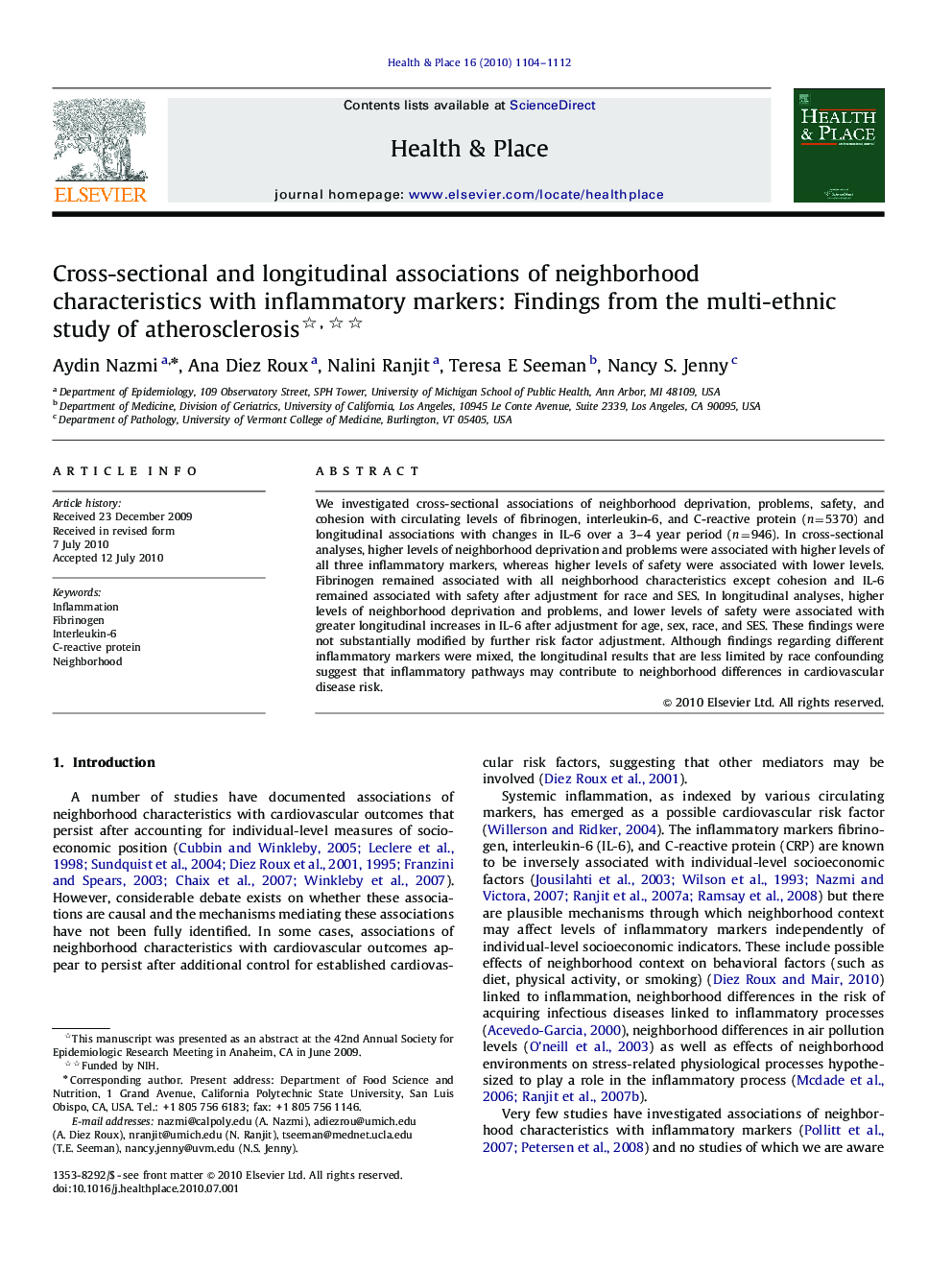| Article ID | Journal | Published Year | Pages | File Type |
|---|---|---|---|---|
| 1048595 | Health & Place | 2010 | 9 Pages |
We investigated cross-sectional associations of neighborhood deprivation, problems, safety, and cohesion with circulating levels of fibrinogen, interleukin-6, and C-reactive protein (n=5370) and longitudinal associations with changes in IL-6 over a 3–4 year period (n=946). In cross-sectional analyses, higher levels of neighborhood deprivation and problems were associated with higher levels of all three inflammatory markers, whereas higher levels of safety were associated with lower levels. Fibrinogen remained associated with all neighborhood characteristics except cohesion and IL-6 remained associated with safety after adjustment for race and SES. In longitudinal analyses, higher levels of neighborhood deprivation and problems, and lower levels of safety were associated with greater longitudinal increases in IL-6 after adjustment for age, sex, race, and SES. These findings were not substantially modified by further risk factor adjustment. Although findings regarding different inflammatory markers were mixed, the longitudinal results that are less limited by race confounding suggest that inflammatory pathways may contribute to neighborhood differences in cardiovascular disease risk.
